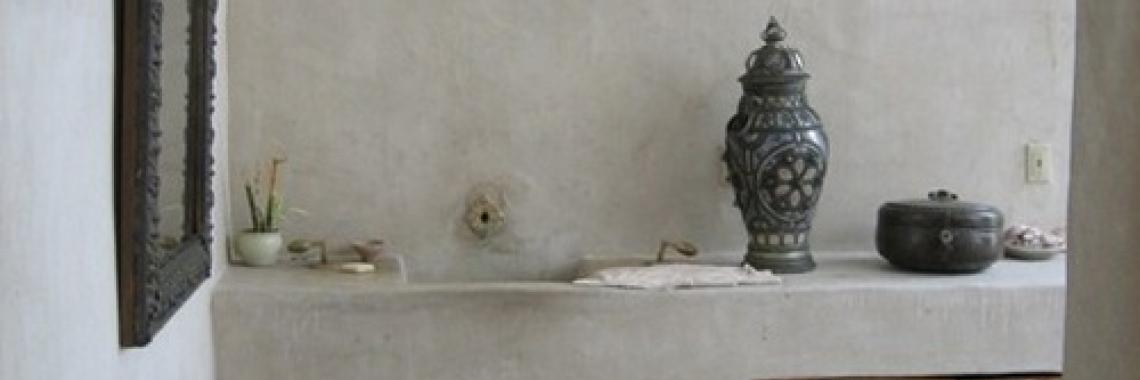
Tadelakt
Natural hydraulic lime, graduated sand with quartz, marble powder, clay, ashes, fossil flour (diatom earth), cellulose.
There is practically no written documentation on Tadelakt.
The origin of the name is from the verb “dlek” which in Arabic means “to massage, to knead”. It is an ancient plasterwork technique from Marocco, utilized in hammams as the traditional lining of fountains and of buildings of particular value, as it remains shiny and waterproof.
The original Tadelakt is exclusively made with a special kind of lime, home-made produced in old wood furnaces in Marrakesh; it is obtained by baking flakes of plaster from impure limestone in intermittent ovens fueled by olive and palm wood for about 30 hours. This mixture is applied like plaster and subsequently made smooth with special river stones and then polished with black soap made of olives. The surface worked in this manner gives great aesthetical results: it is water proof and features a shiny undulated appearance with a slightly irregular colour. Furthermore, its capacity to transpire prevents the formation of mould.
This material is waterproof but not resistant to water vapour; it is considered a material for bio-construction as it is composed mainly of natural products.
It is the ideal material for use in finishes of value and to enhance small environments, walls, ceilings, flooring, water-basins, shower trays and bath tubs and also for furniture and decor, including kitchen counters.
Surfaces appear soft and shiny, with a particular “silky” aspect.
General information
Plaster for interior spaces, for water-resistant surfaces, installed with a hand-polishing process.
Characteristics
Lime mortar, composed of pure minerals without the addition of any chemical components.
It has no particular odour and it remains clean and waterproof – also water-repellent if treated with polishing soap.
It also acts as a disinfectant because of its high level of alkalinity.
Composition
Natural hydraulic lime, graduated sand with quartz, marble powder, clay, ashes, fossil flour (diatom earth), cellulose.










